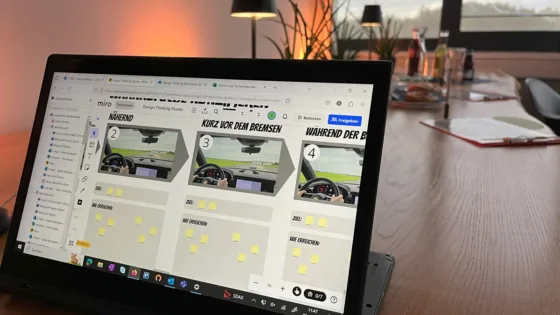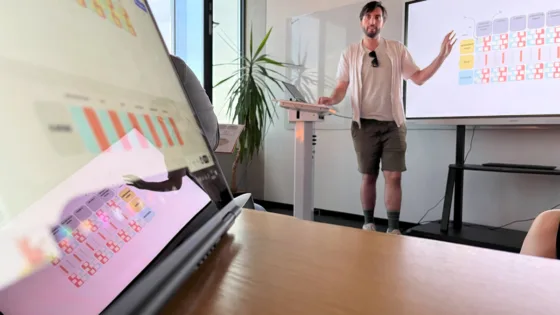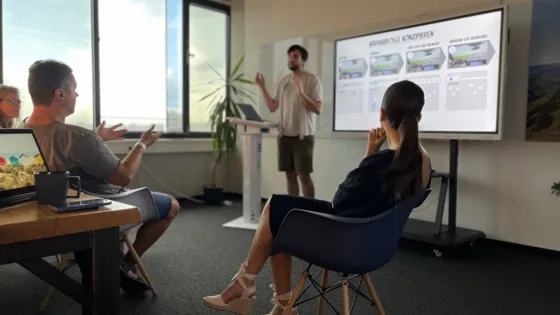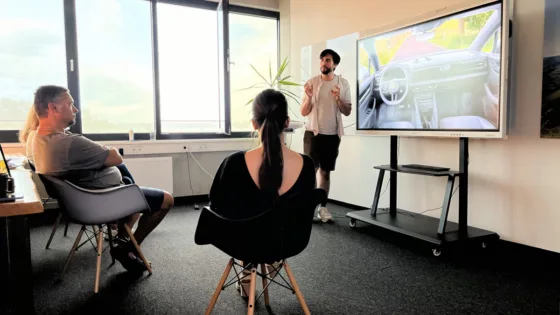Rethinking User-Centric Innovation: A Two-Step Experiment Design for Design Thinking Workshops

Developing innovative products in the field of Human Factor and User Experience (UX) is particularly challenging when it involves new, complex technologies that users are not yet familiar with. How can we ensure that functions are experienced intuitively, that user needs are truly met, and that acceptance increases in such cases?
This is precisely where the new paper from our Human Factor + UX Team, presented by Gioele Micheli at AHFE 2025 in Orlando, comes in:
What is the “Two-Step Experiment Design”?
The paper introduces a two-phase experimental design that combines the strengths of Usability Testing and Design Thinking workshops:
1️⃣ Usability Testing
Participants test an innovative function (in this case, a safety-critical ADAS feature) without prior assumptions, providing immediate feedback. This allows them to become familiar with the product and share their initial impressions, suggestions for improvement, and emotional reactions.
2️⃣ Design Thinking Workshop
In a creatively designed workshop environment, the use of the product is re-contextualized in practical scenarios (using storytelling and journey mapping). Participants then develop their own ideas on how the function could be made more intuitive or how the overall user experience could be enhanced.
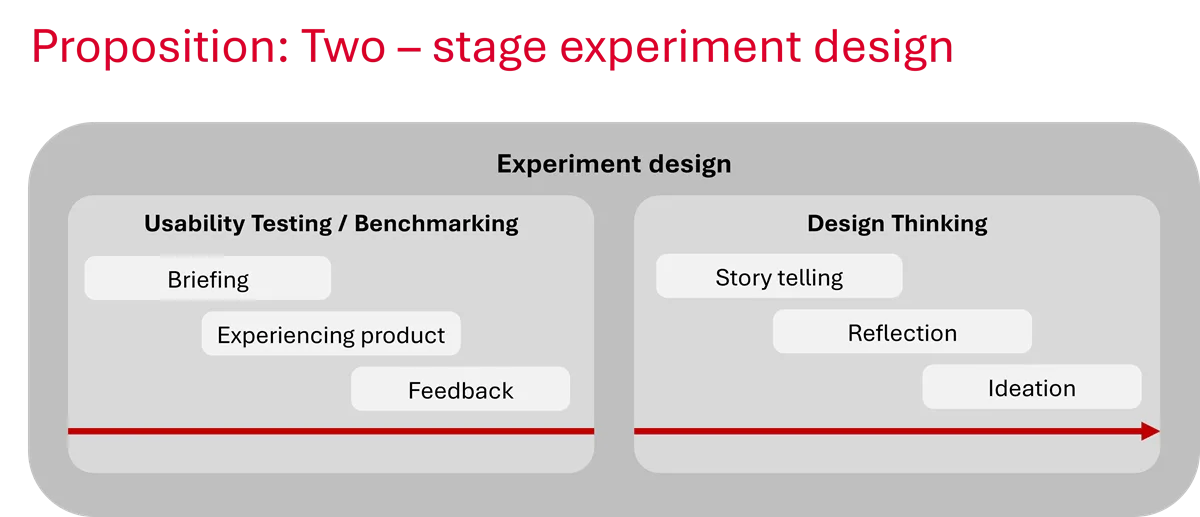
Practical Application with an OEM
This approach was applied with 22 participants in cooperation with an OEM. It led to:
- identification of concrete usability issues,
- systematic collection of emotional reactions during use,
- and user-driven improvement suggestions that could directly feed into product development.
An interesting insight: In safety-critical situations, users prefer acoustic and haptic signals over visual warnings, as visual signals are often missed under stress.
Why is this approach valuable?
✅ Combines qualitative and quantitative user research.
✅ Creates genuine user-centricity, even with technological innovations.
✅ Helps teams to implement targeted improvements early in development.
✅ Provides artifact-based guidelines for product development teams.
Who can benefit from this approach?
- OEMs and suppliers developing innovative in-vehicle functions seeking to secure user acceptance from the outset.
- UX teams needing user-centered insights for complex technologies.
- Product developers aiming to transform subjective feedback into structured improvement measures.
Curious to learn more?
- Follow the presentation live from Orlando (Florida)
Watch the presentation live on Monday, July 28, 2025, from 08:30–10:00 EDT at AHFE 2025 (hybrid). - Full paper
Those who wish to dive deeper into the topic and read the detailed analysis will find valuable insights in the paper:
„Two – step Experiment Design for Participative Design Thinking“
Gioele Micheli, Seda Aydogdu und Prof. Bernhard Schick



